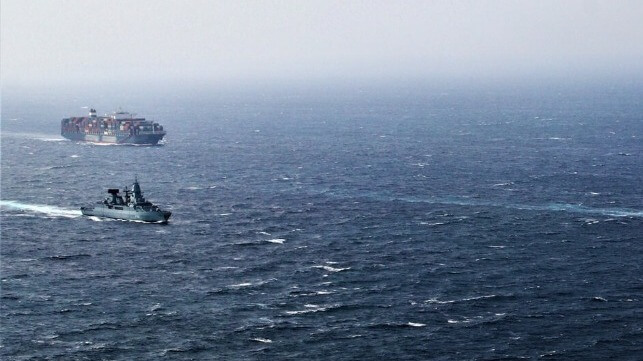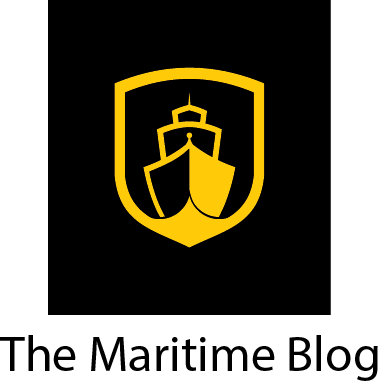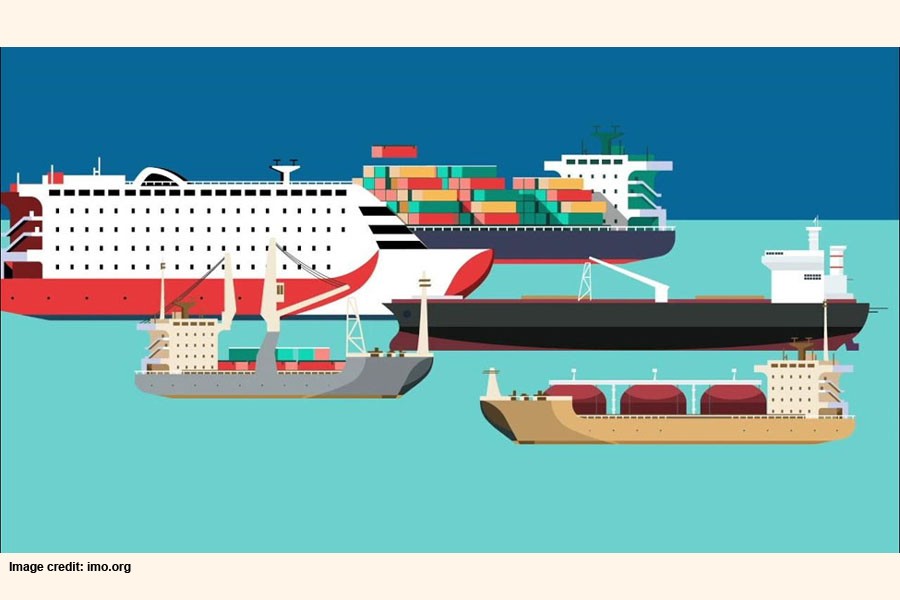search the site
Bangladesh’s maritime crossroads

Ghulam Suhrawardi | April 03, 2025
India’s grand assertion of securing control over Bangladesh’s Mongla Port has become a major diplomatic embarrassment. After months of celebrating its perceived strategic victory over China and strengthening its regional influence, India has now been confronted with an unexpected reality-Pakistan’s cargo ships docking at the very port it claimed to control. This geopolitical twist has cast doubts over India’s long-term maritime strategy in Bangladesh, highlighting the volatile regional power struggle.
This article delves into the geopolitical and economic ramifications of the Mongla Port controversy, situating it within the broader contest for influence over Bangladesh’s maritime infrastructure. The Mongla Port deal, initially perceived as a strategic win for India, has now been thrust into uncertainty, particularly with Pakistan’s unexpected presence. Beyond Mongla, Bangladesh’s port network-including Matarbari, Chattogram, and Payra-has become a pivotal arena in the India-China rivalry, with Japan and Pakistan emerging as influential stakeholders in the Bay of Bengal.
As Bangladesh aspires to solidify its position as a key maritime hub, its ports’ comparative strengths and strategic significance will be assessed against regional counterparts like Sri Lanka’s Colombo and Hambantota, Myanmar’s Sittwe, and Pakistan’s Gwadar. The article also examines how Bangladesh can balance foreign investments, economic growth, and security considerations, ensuring its maritime ambitions are pursued without compromising sovereignty. The Mongla dispute has already exposed the fragility of India’s influence, raising pressing questions about the future of Bangladesh’s port strategy. Will Bangladesh emerge as an independent maritime force, or will its strategic choices be shaped by external powers vying for dominance in the Indian Ocean.
ASSESSING THE FEASIBILITY OF BANGLADESH’S PORT INFRASTRUCTURE PLANS: Bangladesh’s maritime sector is the lifeline of its economy, with over 92 per cent of trade conducted through its ports. As the country’s trade volume continues to grow, its existing port infrastructure faces increasing pressure, necessitating deep-sea port projects to accommodate larger vessels and enhance connectivity. Recognising this need, Bangladesh has pursued three key projects-Matarbari, Payra, and Sonadia-each with distinct potential, challenges, and geopolitical implications. While some projects have gained international backing and momentum, others have struggled with feasibility issues or geopolitical roadblocks.
MATARBARI, PAYRA, AND SONADIA: BANGLADESH’S PORT DILEMMA IN A SHIFTING GEOPOLITICAL LANDSCAPE: As Bangladesh advances its efforts to modernise its maritime infrastructure and expand its role in regional trade, three deep-sea port projects-Matarbari, Payra, and Sonadia-have come to represent not only the country’s economic aspirations but also the complex web of geopolitical forces shaping South Asia. Each project embodies a distinct set of opportunities and challenges, reflecting the broader strategic contest between major global powers vying for influence in the Bay of Bengal.
MATARBARI: THE CROWN JEWEL OF BANGLADESH’S MARITIME FUTURE: Among the three, Matarbari is the most viable and strategically promising option. Backed by Japanese investment through JICA (Japan International Cooperation Agency), the port benefits from cutting-edge engineering, sound financial planning, and strong regional support. Designed as an artificial deep-sea port with a 16-meter draft, it can handle Panamax and Capesize vessels, ensuring Bangladesh can accommodate larger cargo ships and expand its trade capacity. Its proximity to Chattogram makes integration with existing transport networks seamless, reinforcing its potential as the country’s primary maritime gateway.
Despite the high construction costs and environmental considerations, Matarbari’s strong financial and technical backing from Japan ensures steady progress. With full-scale operations expected by 2030, it is poised to become Bangladesh’s premier deep-sea port, strengthening its position as a key player in regional trade.
PAYRA: AN AMBITIOUS PROJECT FACING UNCERTAIN WATERS: Payra, once envisioned as a deep-sea port capable of revolutionizing Bangladesh’s maritime sector, has encountered severe feasibility challenges that cast doubt on its long-term sustainability. The high sedimentation rates in its location require costly and continuous dredging, leading experts to question whether the project can justify its enormous maintenance costs. Without substantial foreign investment or technical assistance, Payra remains a high-risk venture that may not deliver the expected economic benefits. As a result, what was initially planned as a deep-sea port has now been downgraded to a standard port, significantly reducing its strategic importance. Without a viable economic model or external funding, Payra risks becoming an expensive miscalculation, struggling to maintain relevance in Bangladesh’s evolving port landscape.
SONADIA: THE GEOPOLITICAL PAWN THAT NEVER MATERIALISED: Sonadia was once Bangladesh’s most promising deep-sea port project, with China poised to finance and develop it as part of its Belt and Road Initiative (BRI). However, the project became a flashpoint in the India-China rivalry, as New Delhi strongly opposed Beijing’s involvement, citing security concerns and strategic influence in the Bay of Bengal. Under pressure from India, Bangladesh ultimately scrapped the Sonadia project, redirecting its deep-sea port ambitions toward Japan-backed Matarbari instead. This move reflected India’s successful diplomatic influence in preventing a Chinese foothold in Bangladesh’s maritime sector. While Sonadia was once seen as a game-changer for regional trade, it has become a symbol of geopolitical sacrifice, effectively buried under the weight of great power competition.
NAVIGATING BANGLADESH’S MARITIME FUTURE: Among Bangladesh’s deep-sea port ambitions, Matarbari has emerged as the clear frontrunner, benefiting from robust financial backing, strategic planning, and long-term feasibility. Payra, meanwhile, faces existential challenges, with doubts over its economic viability and sustainability. Sonadia, once a promising prospect, has been politically sidelined, with India ensuring that Bangladesh remains aligned with its regional strategic interests over China’s economic expansion. As Bangladesh charts its maritime future, its choices will have profound implications-not just for its own economic growth and trade expansion but also for the geopolitical balance in the Indian Ocean. With Matarbari taking center stage, the question remains: Can Bangladesh leverage its ports to assert economic independence, or will its maritime strategy continue to be shaped by competing global interests?
BANGLADESH’S STRATEGIC TIGHTROPE: BALANCING ECONOMIC GROWTH AND GEOPOLITICAL PRESSURES IN THE BAY OF BENGAL: Situated at the nexus of South and Southeast Asia, Bangladesh has emerged as a critical player in the geopolitical contest for influence over the Indian Ocean region. With India, China, Japan, and the United States all seeking strategic footholds in its maritime infrastructure, Bangladesh’s approach to port development and economic expansion has become a high-stakes balancing act. As it undertakes ambitious port projects, Dhaka must navigate the fine line between attracting foreign investment and safeguarding its sovereignty, ensuring that economic growth does not come at the expense of strategic autonomy.
Bangladesh’s port development strategy is shaped by economic imperatives and geopolitical realities. Matarbari, backed by Japan, is the most financially and technically viable deep-sea port project, offering a sustainable solution to Bangladesh’s growing maritime trade demands. In contrast, Payra faces mounting feasibility concerns, with high maintenance costs and infrastructure challenges threatening its long-term viability. Meanwhile, Sonadia-a once-promising deep-sea project backed by China-was politically sidelined due to Indian opposition, reflecting the broader power struggle between Beijing and New Delhi over Bangladesh’s strategic alignment.
As Bangladesh moves forward, its port investments must prioritize long-term economic benefits over external political pressures. By maintaining a diverse network of trade and investment partnerships, Bangladesh can leverage its strategic location without becoming overly dependent on any single global power. The challenge lies in ensuring that its ports remain engines of economic prosperity rather than arenas of geopolitical contestation-a delicate yet essential balance in shaping the nation’s maritime future.
INDIA’S STRATEGIC IMPERATIVES: INFLUENCE AND CONNECTIVITY: For India, Bangladesh serves as a crucial transit hub, particularly for its landlocked northeastern states, making access to Bangladesh’s ports a key strategic objective. New Delhi has actively opposed Chinese involvement in Sonadia, citing security concerns, but remains comfortable with Japan’s investment in Matarbari, which aligns with its regional interests. India aims to secure preferential access to Mongla and Chattogram ports, solidifying its influence in Bangladesh’s coastal and inland connectivity while countering Chinese expansion.
CHINA’S EXPANDING FOOTPRINT: THE MARITIME SILK ROAD IN BANGLADESH: As part of its Maritime Silk Road Initiative, China views Bangladesh as a critical link in its broader Indian Ocean trade network. Beijing has already invested heavily in Bangladesh’s infrastructure, spanning rail, ports, and energy sectors, with active involvement in Mongla, Chattogram, and Payra port projects. However, this growing presence has triggered resistance from India, which sees Chinese influence as a strategic challenge in its own backyard. Despite geopolitical friction, Bangladesh continues to welcome Chinese investments, recognizing their potential to transform its maritime sector and enhance its global trade competitiveness.
JAPAN’S ROLE — A NEUTRAL BUT STRATEGIC PLAYER: Unlike India and China, Japan has historically maintained friendly relations with Bangladesh without causing significant geopolitical tensions. Through JICA (Japan International Cooperation Agency), Tokyo is funding the Matarbari Deep-Sea Port, a move widely interpreted as a counterbalance to China’s growing influence in Bangladesh’s port development. Japan’s involvement is seen as a diplomatic middle ground, allowing Bangladesh to expand its maritime capabilities without fully aligning with either China or India.
THE UNITED STATES: A STRATEGIC COUNTERWEIGHT TO CHINA: The United States has shown increasing interest in the Bay of Bengal, viewing it as a crucial theater in its Indo-Pacific strategy. While Washington’s direct involvement in Bangladesh’s port infrastructure has been limited so far, it is closely monitoring China’s growing foothold in the country. Recent U.S. support for Bangladesh’s defense modernization suggests an effort to strengthen security ties and prevent an excessive tilt toward China. This aligns with India’s broader Indo-Pacific strategy, potentially leading to greater U.S. engagement in Bangladesh’s strategic affairs.
STEERING THROUGH THE CROSSCURRENTS OF GLOBAL POWER RIVALRIES: As Bangladesh charts its course through the complex waters of economic expansion and geopolitical competition, it must master the art of strategic diplomacy to ensure that its maritime policies align with national interests and regional stability. With China offering extensive infrastructure funding, India asserting its regional influence, Japan presenting a neutral yet strategic alternative, and the United States monitoring Beijing’s growing presence, Bangladesh’s port development strategy is far more than an economic endeavor-it is a test of its diplomatic agility. The choices Dhaka makes today will shape its trade potential and define its geopolitical alignment in the evolving Indo-Pacific order.
At the heart of Bangladesh’s maritime ambitions lies a delicate balancing act-harnessing foreign investments to fuel economic growth while preserving sovereignty and avoiding excessive dependence on any single power. The competing interests of global players offer both opportunities and risks, requiring Bangladesh to strategically diversify its partnerships while ensuring that its ports remain engines of economic progress rather than pawns in geopolitical conflicts.
By carefully managing these relationships, Bangladesh can assert itself as an independent maritime and economic force, strengthening its position as a regional trade hub without compromising its autonomy. The road ahead is intricate, but with pragmatic diplomacy, innovative investment strategies, and a commitment to national interests, Bangladesh can cement its role as a rising economic power in the Indian Ocean-one that navigates global rivalries with confidence and foresight.
Ghulam Suhrawardi is the publisher of the USA-based South Asia Journal, author of Bangladesh Maritime History and nautical publications, and President of the Bangladesh Marine Academy Alumni Association. Contact: [email protected]
source : thefinancialexpress


















